DLBCL Stories
Between grief, gratitude, isolation, and connection—someone out there likely knows how you feel.
Find out what other people with diffuse large B-cell lymphoma (DLBCL) and their caregivers have gone through below.
DLBCL Stories
Between grief, gratitude, isolation, and connection—someone out there likely knows how you feel.
Find out what other people with diffuse large B-cell lymphoma (DLBCL) and their caregivers have gone through below.
My Truths
Get stories of struggle and strength from people living with DLBCL and their caregivers.
ADC Therapeutics respects the privacy of individuals who have shared their experiences. For this reason, people in photos included on this page are not real patients.
Click on any photo with + to read a story.
Sign up to tell us your DLBCL truths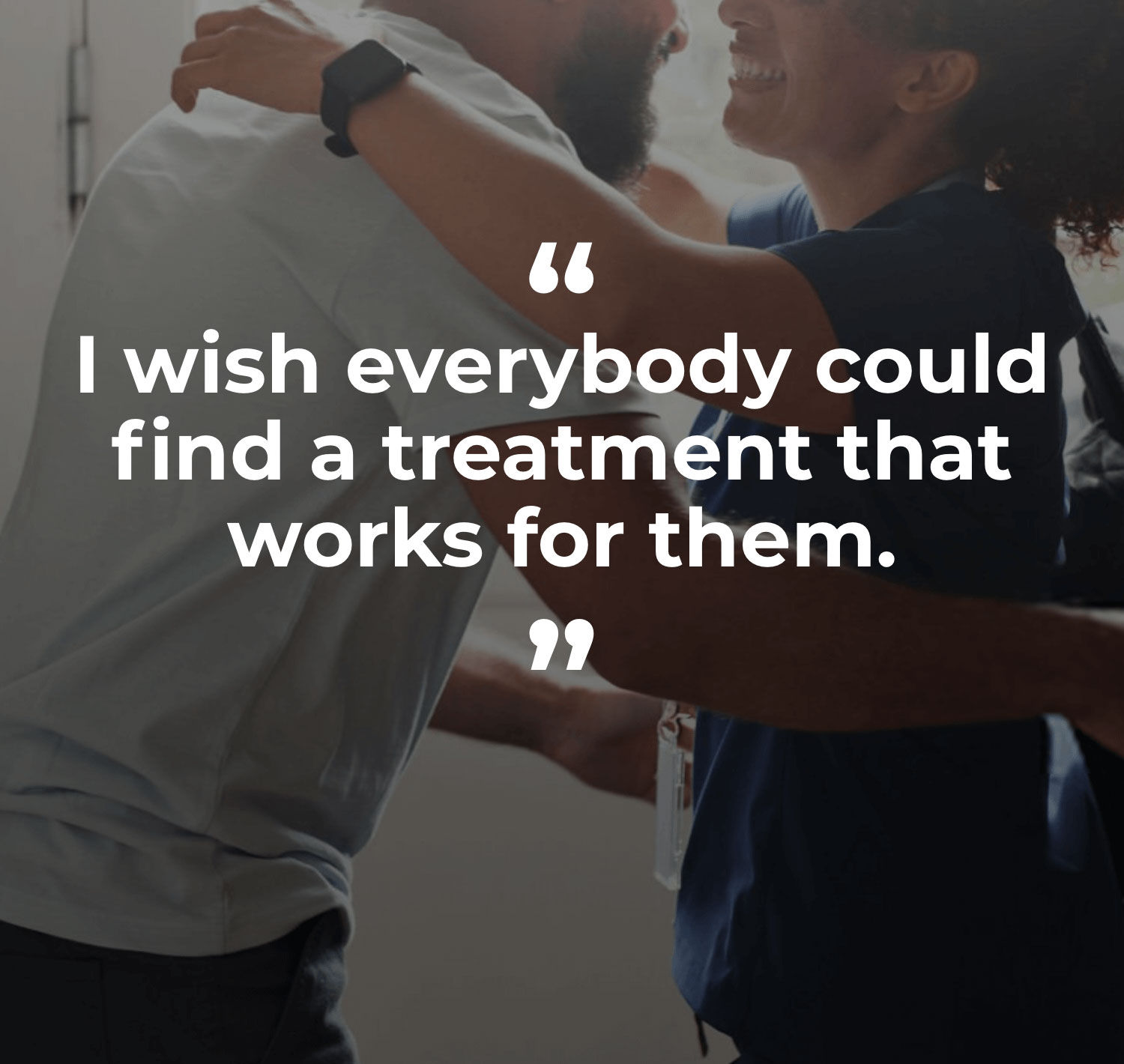
I wish everybody could find a treatment that works for them.
Marcus’s DLBCL Story
Treatment history:
- Relapsed 2 times
- Tried radiation and chemotherapy
“I wish everybody could find a treatment that works for them.”
Before cancer, I loved working on old cars with my brother. We used to take road trips to visit and fix them up. It was my favorite thing to do until I got DLBCL.
I couldn’t breathe. I got treated for asthma at first. Then I got worse. The doctors said, “You have lymphoma on the outside of your lungs. But we can help you.” I got treatments that worked for a few months. But then I went from 195 pounds down to 120 pounds in 1 month.
That’s when my doctor put me on ZYNLONTA®. He said it’s different than the chemo I had before, explained how it worked in studies, and shared side effects to watch for.
ZYNLONTA® worked for me. And it helped me get on with my life while I was getting treated.
I finally went on another road trip to see my brother. We felt like teenagers working on our old cars. I’m so happy I got to do that again.

My advice is to first ask your doctor about ALL of your options. Second, always do your research. Third, if ZYNLONTA® is offered to you, look into it. The most important thing is to not be afraid. If I can do this, you can do this.
The stories on this page draw from the experiences of real people living with DLBCL. They are not direct quotes or representative of just one person’s story. Individual results will vary.
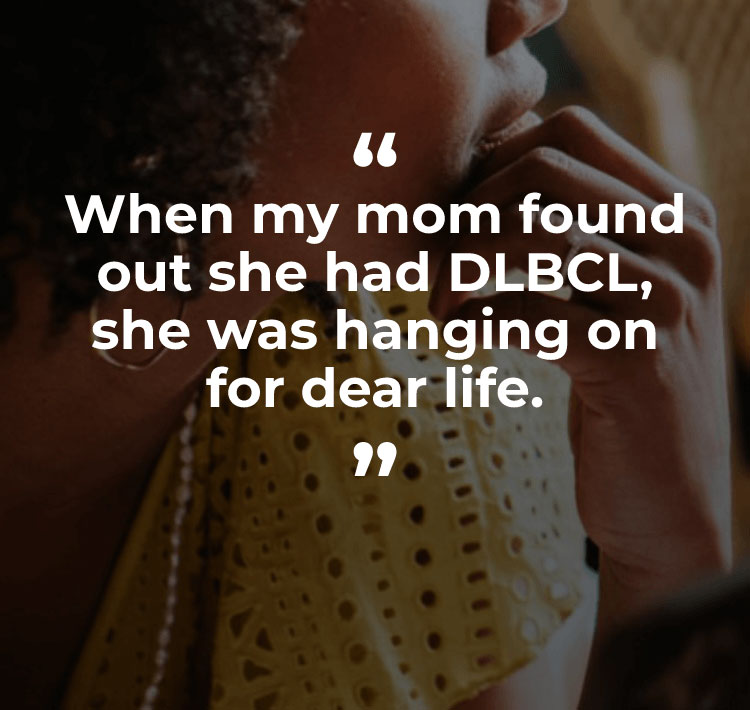
When my mom found out she had DLBCL, she was hanging on for dear life.
Cindy’s Caregiver Story
Treatment history:
- Takes care of her mother, Vivian
- Vivian was diagnosed with DLBCL in 2015
- Vivian had 2 different chemotherapies, radiation therapy, and immunotherapy
“When my mom found out she had DLBCL, she was hanging on for dear life.”
My mom’s doctor was very pessimistic. He said, “Vivian probably won’t survive that long.” I was very panicky—I felt like we were in dire straits. She was in pain and had lost a ton of weight.
We knew the chances of a cure go down if DLBCL comes back. My mom went through so much at the start.
When the disease came back with a vengeance, she was deflated. She thought she had been cured, so the idea of having to start over was terrible.
I get most of the information from an online support group for non-Hodgkin’s lymphoma. My mom and I both read people’s experiences with different treatments. I’ve learned how to do research and how to come prepared to speak to the doctors.
Nowadays, my mom has more good days than bad. At the beginning it was an acute issue that had to be dealt with immediately. Now it’s a chronic condition that we’re managing. It’s like rowing a boat, going along steadily, just moving forward.

My advice would be to make sure you’re taking care of yourself. This way you can truly be there for them.
The stories on this page draw from the experiences of real people living with DLBCL. They are not direct quotes or representative of just one person’s story. Individual results will vary.
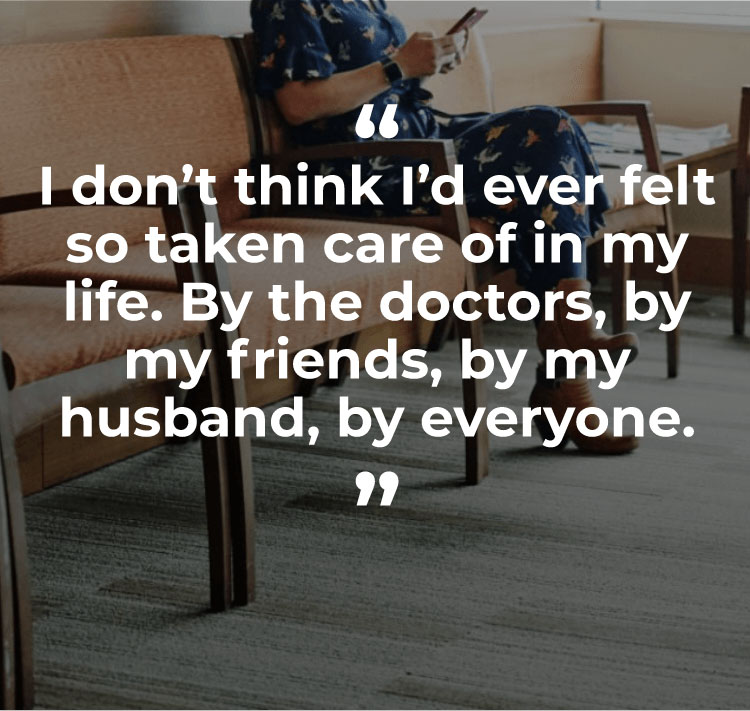
I don’t think I’d ever felt so taken care of in my life. By the doctors, by my friends, by my husband, by everyone.
Catherine’s DLBCL Story
Treatment history:
- Diagnosed with DLBCL
- Tried chemotherapy and had 1 stem-cell transplant
“I don’t think I’d ever felt so taken care of in my life. By the doctors, by my friends, by my husband, by everyone.”
When I was diagnosed with DLBCL on my 1-year anniversary with my husband, I was terrified. But I decided that I was going to use everything I could to fight it. DLBCL is a brutal, sneaky disease, but it is treatable. I always said I wasn’t afraid of dying. I was afraid of leaving. I wasn’t ready to leave yet.
When the cancer relapsed, I was more shocked than when I first got diagnosed with cancer. I didn’t even have symptoms. I wanted to shut down. I didn’t want to deal with it. When I was in the middle of the fight, the disease was the fight. I was fighting it. When it came back, I felt like it had become part of me, like I couldn’t lose it entirely.

The thing that’s helped me get through has been the support. I’ve always been the person who shows up for others, but it’s different when you’re receiving it. My advice is to be willing to ask for what you need and accept that you may not be able to pay them back.
The stories on this page draw from the experiences of real people living with DLBCL. They are not direct quotes or representative of just one person’s story. Individual results will vary.
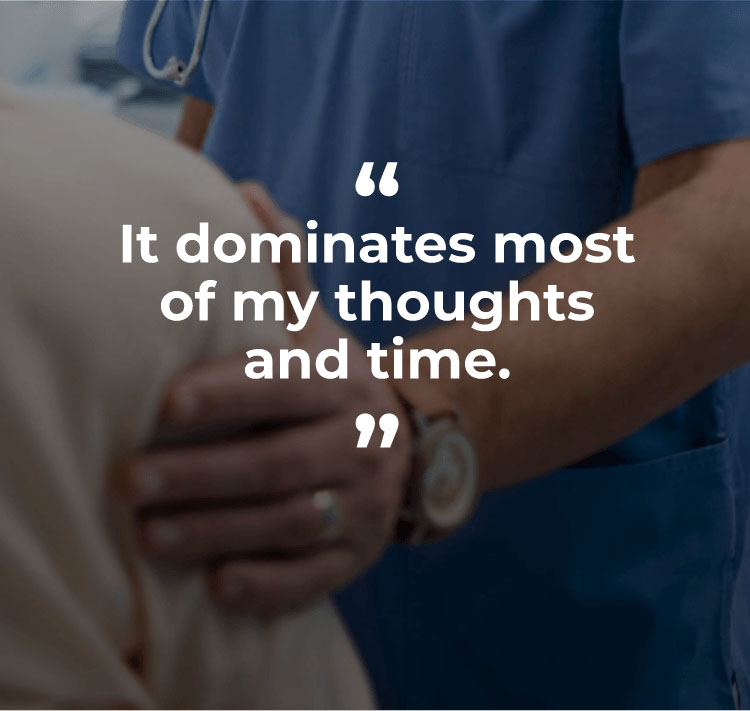
It dominates most of my thoughts and time.
Nia’s DLBCL Story
Treatment history:
- Relapsed 6 times in 4½ years
- Tried 2 different chemotherapy treatments, 2 immunotherapy treatments, and 1 stem-cell transplant
“It dominates most of my thoughts and time.”
I had a cough and chest pain that I thought was reflux. An urgent care doctor sent me to the hospital for scans. That’s when I found out there was a large B-cell lymphoma mediastinum growth.
The first time I relapsed, I felt like I got sideswiped. I got treated and it went away. But the cancer came back 3 times and then spread to my brain. That’s when I started digging deep, doing my own research, and asked about different therapies.
When it spread to my brain, my husband was terrified. He thought I was going to die. I’d never seen him like this before. I was in pure survival mode, just thinking about what therapy might be next.
I just want more time. It’s really important to have my grandchildren remember me.

My advice for anyone going through something like this is to research. At some point, I just said, “We’re going to throw everything at this. Both alternative and standard. I’m just going to make sure it goes away and never comes back.” I feel ready if it does.
The stories on this page draw from the experiences of real people living with DLBCL. They are not direct quotes or representative of just one person’s story. Individual results will vary.
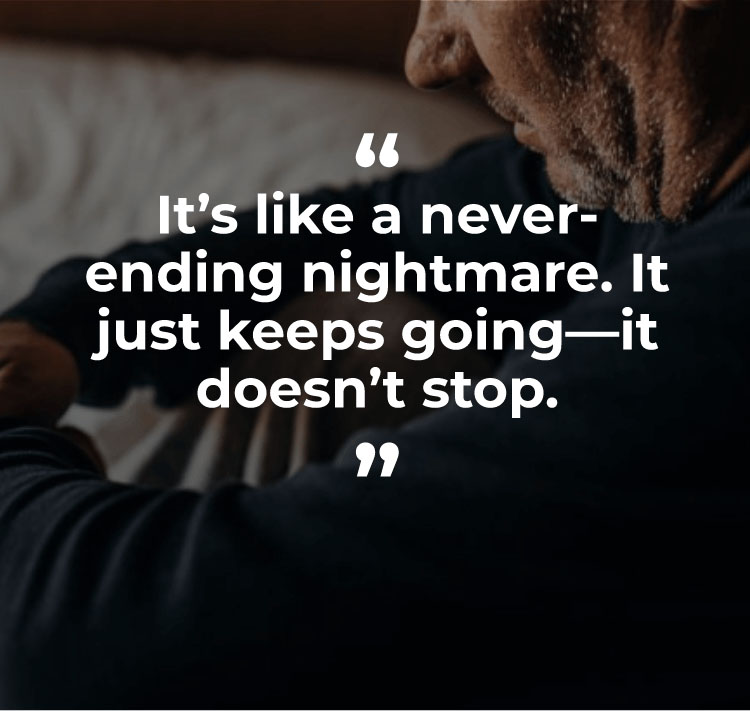
It’s like a never-ending nightmare. It just keeps going—it doesn’t stop.
Mitch’s Caregiver Story
Treatment history:
- Takes care of his wife, Kady
- Kady was diagnosed with DLBCL in November 2011
- Kady had chemotherapy and 4 different immunotherapy treatments
“It’s like a never-ending nightmare. It just keeps going—it doesn’t stop.”
DLBCL sucks. It’s life-threatening, and I want it to go away. It’s always there lurking in the background, and you don’t know when the next blow is going to strike. It’s like a never-ending nightmare.
What’s hardest is constantly worrying about relapse and the next treatment. When Kady’s cancer relapsed after chemo, we were depressed. We wondered, “Okay, well, what is the next treatment? What is the chance that remission’s going to last?”
I relied solely on our oncologist for the first 2 treatments. But then I decided I’ve got to branch out and keep looking for the next treatment. And I did research on my own and reached out to anyone studying this stuff. They were responsive, thankfully. And I felt like there was somebody in our corner fighting for us.

My advice is to always be on the lookout for the next thing. There’s so much that I wish I knew when this started 9 years ago. I would say, “Please keep yourself up to date on the latest treatments and don’t be afraid to ask questions.”
The stories on this page draw from the experiences of real people living with DLBCL. They are not direct quotes or representative of just one person’s story. Individual results will vary.

It feels like walking across a very shaky bridge over the Grand Canyon.
Carmen’s Caregiver Story
Treatment history:
- Takes care of her husband, Juan
- Juan was diagnosed with Hodgkin’s lymphoma at 17 years old and was in remission for years
- Juan was then diagnosed with DLBCL in 2013
- Juan had radiation therapy, 3 different chemotherapy treatments, and 1 stem-cell transplant
“It feels like walking across a very shaky bridge over the Grand Canyon.”
After 5 years of remission, they said, “You’ve got stage IV DLBCL.” At this point, Juan really thought that he wasn’t going to survive. He thought, “I’m never going to teach our son how to drive. I’m never going to see him graduate high school.”
We feel constant terror and exhaustion. It feels like walking across a very shaky bridge over the Grand Canyon. At every step, things can go wrong. Our life is just appointments, hospitals, IVs, and test results.

I strongly advise other people going through this to be their own advocate. If you feel something’s wrong or you don’t understand something, speak up. It can make the difference.
The stories on this page draw from the experiences of real people living with DLBCL. They are not direct quotes or representative of just one person’s story. Individual results will vary.

Sign up to tell us your truths
If you would like to share your DLBCL or ZYNLONTA® (loncastuximab tesirine-lpyl) treatment story, please leave your information with us. An ADCT representative will reach out to you with more details.
This is not a form to report side effects. You may report side effects to the FDA at (800) FDA-1088 or www.fda.gov/medwatch. You may also report side effects to ADC Therapeutics at 1-855-690-0340.
Connect with your community. Sharing your experience could help others with DLBCL, whether you:
- have DLBCL that has not gone away after 2 or more treatments
- care for someone who has DLBCL
Please fill in your information:
Thank you for filling out this form.
We will reach out to you so you can share your ZYNLONTA® story.
Go back home